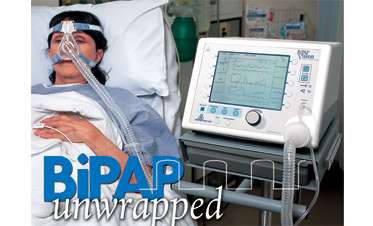Bipap vs. CPAP: Which Is the most effective for Your Sleep Disorder?
When navigating the intricacies of sleep conditions, the choice in between BiPAP and CPAP therapy is a crucial factor to consider. While CPAP gives a stable air flow ideal for obstructive sleep apnea, BiPAP's twin stress setups might boost comfort for those with more complex respiratory problems.
Recognizing Rest Disorders
Rest problems include a range of conditions that disrupt regular rest patterns, influencing both the high quality and period of remainder. These disorders can manifest in various types, consisting of sleeping disorders, sleep apnea, narcolepsy, troubled leg disorder, and parasomnias. Each problem provides special challenges, often resulting in significant daytime tiredness, cognitive disability, and emotional disturbances.
Sleeplessness is characterized by difficulty dropping or remaining asleep, while sleep apnea involves duplicated disturbances in breathing throughout rest, typically bring about fragmented rest. Narcolepsy, on the various other hand, is noted by too much daytime drowsiness and sudden rest attacks. Restless leg syndrome triggers unpleasant feelings in the legs, prompting an irrepressible urge to relocate them, which can likewise impede the ability to drop asleep.
The impact of rest disorders extends beyond individual health, influencing general productivity, partnerships, and quality of life. Understanding the certain nature of each condition is crucial for effective medical diagnosis and treatment. As rest health and wellness becomes progressively identified as an essential component of general wellness, dealing with these disorders is important for boosting both sleep quality and everyday performance.
Exactly How CPAP Functions
Continual Favorable Airway Pressure (CPAP) therapy is regularly employed as a main treatment for obstructive sleep apnea (OSA) The mechanism of CPAP involves using a machine that provides a steady stream of air via a mask put on throughout rest. This air flow maintains favorable pressure in the airway, stopping the collapse or obstruction of the throat that can take place throughout rest.
When a person takes a breath in, the CPAP device supplies a continuous circulation of air, making certain that the respiratory tract stays open - BiPAP Rental. This not only relieves the signs and symptoms of OSA, such as snoring and interfered with sleep patterns, yet also lowers the affiliated wellness threats, consisting of cardio problems and daytime tiredness
The pressure settings on a CPAP machine can be tailored to meet private person requirements, frequently figured out via a rest research study. Overall, CPAP treatment has actually been revealed to significantly boost the quality of sleep and general wellness for individuals suffering from obstructive rest apnea.
Exactly How BiPAP Functions
BiPAP, or Bilevel Favorable Respiratory Tract Stress, is a specific kind of non-invasive air flow that is specifically valuable for patients with problems such as complex rest apnea or respiratory disorders. Unlike CPAP, which supplies a continual stream of air at a solitary stress, BiPAP offers 2 distinctive pressure settings: a higher inspiratory stress for inhalation and a reduced expiratory pressure for exhalation. This dual-pressure method enables easier this article breathing, reducing the effort required during exhalation.
The gadget operates with a mask fitted over the nose or mouth, linked to a maker that generates air pressure. When the person breathes in, the equipment delivers the greater stress to aid with airflow, making sure that the respiratory tract continues to be open. Upon exhalation, the machine immediately reduces the stress, making it more comfy for the individual to breathe out.

Key Differences In Between BiPAP and CPAP

On the other hand, BiPAP (Bilevel Favorable Respiratory tract Pressure) uses 2 various stress settings: one for inhalation and a lower one for exhalation. This double pressure system enables more comfy breathing, particularly for people that deal with exhaling versus a continuous stress. BiPAP is typically advised for clients with complicated sleep apnea, chronic obstructive pulmonary disease (COPD), or those that require additional support during sleep.
Moreover, the complexity of BiPAP gadgets normally results in a greater cost and requires extra read more careful titration than CPAP. BiPAP Rental. Comprehending these essential distinctions can aid in identifying which device may be better for details sleep problems, setting the groundwork for enlightened treatment decisions
Choosing the Right Therapy
Just how can one establish one of the most suitable treatment for managing rest problems? The decision between BiPAP and CPAP therapy largely hinges on the details features of the rest condition, the patient's total health, and their convenience with the tool. CPAP, which delivers a constant stream of air, is typically recommended for obstructive sleep apnea (OSA) It keeps an open airway during rest, efficiently stopping apneas and hypopneas.
Alternatively, BiPAP provides 2 degrees of stress: one for breathing and a lower one for exhalation. This dual pressure system is helpful for people with complex rest apnea or those who experience problem breathing out against a continuous pressure. Additionally, BiPAP is commonly recommended for people with breathing problems, such as chronic obstructive lung illness (COPD), where differing stress setups can improve comfort and conformity.
Inevitably, a comprehensive assessment by a rest specialist, consisting of a sleep research, can assist determine which treatment aligns best with the client's requirements. Factors such as convenience, simplicity of use, and details clinical problems ought to likewise be considered to optimize treatment outcomes.
Final Thought
In recap, both BiPAP and CPAP serve unique purposes in the management of sleep disorders. CPAP works for obstructive sleep apnea via constant airflow, while BiPAP offers dual stress settings that boost comfort for those with complex sleep apnea or breathing issues. The selection in between these treatments need to be directed by private demands and problems, necessitating a detailed examination by a sleep expert to guarantee ideal treatment outcomes and enhanced quality of rest.

On the whole, CPAP treatment has been revealed to dramatically boost the see high quality of rest and general wellness for people suffering from obstructive sleep apnea.
BiPAP is frequently recommended for people with complex rest apnea, persistent obstructive lung disease (COPD), or those who call for additional support throughout rest.
CPAP is reliable for obstructive rest apnea through constant airflow, while BiPAP uses dual pressure setups that boost comfort for those with complex rest apnea or breathing concerns.
 Tatyana Ali Then & Now!
Tatyana Ali Then & Now! Destiny’s Child Then & Now!
Destiny’s Child Then & Now! Michael Jordan Then & Now!
Michael Jordan Then & Now! Lynda Carter Then & Now!
Lynda Carter Then & Now! Morgan Fairchild Then & Now!
Morgan Fairchild Then & Now!